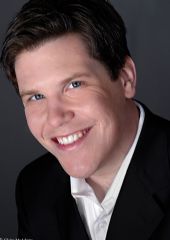|
Other
CHARMING "BARBER" A MENDO FESTIVAL TRIUMPH
by Pamela Hicks Gailey
Friday, July 21, 2023
Other
JOYFULLY WE SING
by Pamela Hicks Gailey
Thursday, February 23, 2023
Other
SUBDUED PIANISM IN RARE FORTEPIANO RECITAL IN THE RAVEN
by Terry McNeill
Sunday, February 12, 2023
Other
DINOVA PIANISM CHARMS SATED AUDIENCE AT J-B MARIN RECITAL
by Terry McNeill
Sunday, November 20, 2022
Other
CLEARY'S NEW ORLEANS BAND IGNITES PARTY FOR THE GREEN AT SSU
by Terry McNeill
Saturday, September 25, 2021
Other
SIX GUITARISTS IN UNIQUE NAPA RECITAL
by Gary Digman
Sunday, July 25, 2021
Other
STUNNING LINCOLN CENTER CONCERT LAUNCHES FIFTH WEILL SEASON
by Philip Beard
Saturday, October 1, 2016
Other
LATE BEETHOVEN EXPLORED AT MMF CONCERT IN PRESTON HALL
by Paula Mulligan
Thursday, July 21, 2016
Other
ANGUISH AND TRIUMPH IN MENDOCINO FESTIVAL'S BIG TENT
by Kayleen Asbo
Sunday, July 10, 2016
Other
ARCANE ARENSKY TRIO HIGHLIGHTS NAVARRO'S SEASON OPENING CONCERT IN SCHROEDER
by Terry McNeill
Sunday, October 4, 2015
|
 |
 Tener Brian Thorsett |
LATE BEETHOVEN EXPLORED AT MMF CONCERT IN PRESTON HALL
by Paula Mulligan
Thursday, July 21, 2016
The Mendocino Music Festival performance in Preston Hall July 22 was titled “Late Beethoven,” and was the final presentation in the tribute to the composer that was part of this year’s Festival. Pianist Susan Waterfall has been giving a series of lecture dealing with Beethoven’s life and music, and the final event concentrated on the works he produced in the last fourteen years of his life.
Beginning the program was tenor Brian Thorsett with pianist Miles Graber performing the cycle of six songs, An die ferne Geliebte. The lyrics express the composer’s feelings of loneliness and rejection, but finally evolve to a resolution that leaves him forever devoted but accepting his fate. Mr. Thorsett has a fine lyrical tenor voice that never shows strain, and his voice floats easily in his upper range and descends with full sonority into the upper register of a baritone. In addition his performance was infused with tender feeling and wistfulness that perfectly suited the text and music.
The E Major Piano Sonata (Op. 109) written in 1820, and was beautifully played by Ms. Waterfall, after an enlightening verbal introduction by the performer which seemed helpful to audience to understand the music and its relevance to that period of the composer’s life. It was a performance of renunciation, resignation and finally acceptance. Ms. Waterfall‘s elegant and passionate interpretation showed the turbulence and conflict of two battling themes that describe the impossible relationship the composer longed for. Even as the work resolves itself into acceptance, it is not without the scowl and growl in the left hand line that merges with the sweet remembrance of what is no more.
The final work was one of the famous “Late Quartets” that Beethoven wrote in the last two and a half years of his life. The Peregrine Quartet chose the A Minor Quartet, Op. 132. The work is in four movements, beginning with a modified sonata form Allegro leading without interruption into the second movement. The mellow opening note from cellist Burke Schuchmann was immediately followed with the layered buildup from Alexander Volonts’ remarkable viola tone, then Tingting Gu’s gentle but insistent second violin, and finally topped with Tammie Dyer’s silvery upper register violin sound, light flexible and airy. Ms Dyer illustrates that one can lead and guide a chamber ensemble without relying on volume and dominance, but rather on a gentle and profoundly moving sound that guides her fellow musicians into a unity. The insistent phrase in this first movement is passed around to each member of the quartet and is repeated in two recapitulations.
The second movement has a similar plaintive motif that is repeated throughout, and the inner voices carry the smooth flowing line with ornaments above from the first violin and comments from the cello below. The playing of the second violin and viola are often not in the forefront but they are the bonding glue that holds everything together. Ms. Gu’s sound is just as authoritative, yet with a different tonal quality than Ms. Dyer’s. Her subtly accented entrances made each inner phrase stand out. Mr. Volonts viola has a large and magnificent sound and he showed admirable restraint and unleashed the instrument’s full power only in the angry fortissimo passages, which created a powerful dramatic contrast to the more subtle and wistful parts of the 1825 work.
Beethoven wrote the third movement as a “Holy Thanksgiving for his healing” after a near death experience. The sound here is somber, transparent and almost sacred. The birdlike exchanges between the first and second violins floated above the viola and cello’s pizzicato punctuation. The dancelike opening of the final Allegro Appassionato showed the skill of the musicians with clean attacks, wonderfully synchronized pauses, and passion with restraint. It is good to be reminded that the silences in music are often as important as the music itself.
The late Beethoven quartets are complex and challenging, and the Peregrine more than met the challenge for a deeply satisfying concert experience.
|

